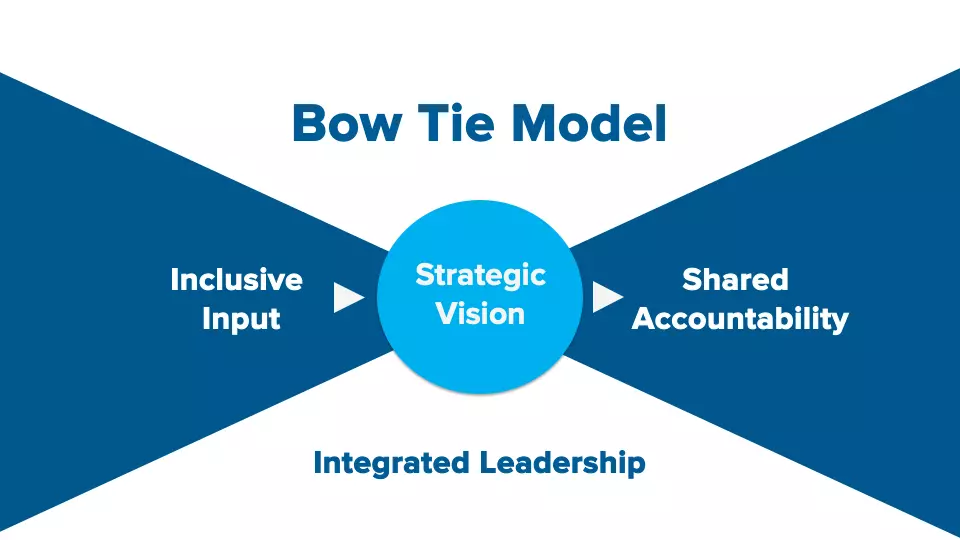- AdventHealth

While the word governance often brings to mind a concept perceived as cut and dried, those who have had the opportunity to take part in establishing a governance framework for transformational priorities would tell you it’s anything but that, and it is the journey that can make all the difference. Here’s a look at the journey we took at AdventHealth for three significant systemwide priorities: our rebrand, service standards and wholeness framework.
Writer and author Rohini Nilekani once said, “As citizens, we have to co-create good governance. We cannot outsource it and hope to be passively happy consumers.”
Co-creation has been an instrumental part of AdventHealth’s strategy to establish strong governance for new systemwide priorities. Because good governance is foundational to sustainability, AdventHealth is committed to a governance process that upholds its mission, ensures accountability and ethical practices, and equips the organization for risks, challenges and opportunities.
Knowing that strategic counsel and input, paired with shared accountability, play a critical role in the realization of its governance goals, AdventHealth has made it a practice to use the bowtie model to help guide decision-making at all levels of the organization.

Deceptively simple in appearance, the bowtie model lays the groundwork for change by gathering inclusive input from diversely appointed stakeholder groups that feeds into the development of a strategic vision, which is then broadly translated and implemented in a way that ensures shared accountability.
The bowtie model is built on the belief that decisions and work are better informed because of diverse input from a wide range of stakeholders, both internal and external. The model has been instrumental in guiding transformational initiatives for the organization, including bringing together a large number of separate and distinct brands in 2019 into a more integrated health care system under a single AdventHealth brand.
"We started as a family of brands with no governance process, and evolved into a branded house with one name,” said Vickie White, chief brand and consumer officer for AdventHealth. “This obviously represented a significant change across the organization that required us to put a formal governance structure in place.” This journey required a model that would allow for co-creation with local market leadership, corporate services, team members and consumers.
The bow tie model proved to be the perfect approach for the task at hand.
"Rather than relying solely on our internal leadership teams when making key decisions about our brand, we conducted multiple consumer focus groups and were very intentional about incorporating that feedback into the process,” White said.
It was the bowtie model in action, paired with design thinking, that helped facilitate co-creation and agreement. “We are a better organization because we are co-creating,” White said. "And because we have very clear accountabilities that many have helped to design."
The idea that people care about what they help create is a deeply held conviction at AdventHealth. That puts the bowtie model at the heart of the visionary process that helps inform how best to govern one of the nation’s largest faith-based health systems.
Even as our single brand was coming together, work had been underway to meld 20 different ways of thinking about service from across what was then Adventist Health System into a unified set of service standards— which ultimately became how patients and communities experience AdventHealth’s mission and values.
Pam Guler, chief experience officer for AdventHealth, led the work that initially brought together 40 contributors from different areas across the system to ideate over the course of several months on foundational service standards. Those ideas were then taken to numerous focus groups with front-line team members and leaders, ultimately resulting in 1000+ contributors to service behaviors that we now live out every day.
“Even though we had already had hundreds and hundreds of voices,” Guler said, “we thought: Why not thousands? Why not bring in more people to ultimately impact the service standards that would later become our reality?” Keep Me Safe. Love Me. Make It Easy. Own It.
That same degree of engagement was incorporated into developing a framework for wholeness that would more clearly define and translate the concepts of wholeness, whole-person care and feeling whole, all very much interwoven in AdventHealth’s culture and serving as the crux of its brand promise.
“We took some ideas we had with whole-person care and we began to sit down with physicians, nurses, academics, people at all levels and in all departments, our wellness coaches and leadership and consumer groups of all sorts,” said Carla Park, vice president of wholeness and faith strategy. The end result: a framework that helps define what it means to extend the healing ministry of Christ via pathways of belonging, wellness, fulfillment and purpose.
The bowtie model of leadership has served the organization well through significant changes and, yes, challenges, as it has served to reinforce AdventHealth’s mission and values. Ensuring accountability in all the right places helps position the organization to better respond to whatever risks and opportunities the future holds on the way to becoming a preeminent, faith-based, consumer-focused clinical company delivering whole-person care.
One thing is certain: The bowtie model is here to stay. “The more people who weigh in, the more beautiful something is going to be. It’s like that because a community crafted it. And the Lord Himself was in the midst of the spiritual — the moving of people’s hearts and minds,” Park said.
To read more AdventHealth’s sustainability work in the areas of community, environment and governance, click here.
Recent News
On the newest Inspiring Wholeness podcast, Obie Diaz, local morning radio show host, shares how a routine physical eventually led to two open heart surgeries.
AdventHealth President and CEO Terry Shaw has been named one of Modern Healthcare’s 100 Most Influential People in Healthcare for 2024, marking continued recognition of Shaw as a transformative leader...
AdventHealth President/CEO Terry Shaw's retirement is planned for July 2025.
On the newest Inspiring Wholeness podcast, Obie Diaz, local morning radio show host, shares how a routine physical eventually led to two open heart surgeries.
AdventHealth has named Elise MacCarroll-Wright as president and CEO of UChicago Medicine AdventHealth Hinsdale in its Great Lakes Region, effective Jan. 6, 2025.
AdventHealth has named Dave Tkachuck president/CEO for UChicago Medicine AdventHealth La Grange, effective Jan. 6.
A UChicago Medicine AdventHealth neurologist addresses the growing gap between the number of men and women diagnosed with MS.
AdventHealth has named Ryan Quattlebaum president/CEO for AdventHealth Wesley Chapel, effective Dec. 29.
Wangsness has more than 30 years of experience in health care.
‘Imagine Wholeness’ features the Grammy-winning group Take 6 and the AdventHealth Orchestra.









